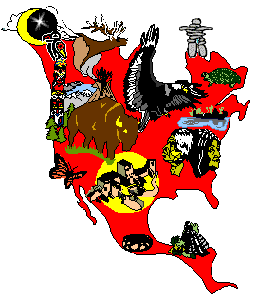 |
MAPS: GIS Windows
|
|---|
 |
MAPS: GIS Windows
|
|---|
NOTE: All imagemaps here are client-side (browser pull) not server push. All maps, graphics large and small, and tribal data linklists are a great deal of work on my part. ALL OF THEM ARE COPYRIGHT. They may NOT BE DOWNLOADED for use on any other website; link-to, but don't steal them! A few large-screen maps are prepared for classroom printout-handouts. These may be downloaded for THAT PURPOSE ONLY, not for web or print reproduction.
|
|---|
Page |
Menu |
|---|
|
Text, maps and graphics copyright -- Paula Giese, 1996. except where elsewhere attributed. CREDITS:The "putting the Indian Sign on North America" map-graphic was originally designed by Akwesasne Mohawk Jim Berenholz in 1976. It's half of a black and white poster for Awkesasne Notes "Bicentennial". The original also has South America (as does my big AIM poster). In 1993, I spent about 3 weeks tracing this (from an old issue of Notes). I colored it in FreeHand and it was a poster for the AIM 25th anniversary and International Indigenous Peoples' Summit meeting then. I've made some changes in the "signs", to suit the low-rez web, and my desire to animate all parts of RedMap. Additional anis will be done one at a time, to celebrate the completion of major jobs of tribal info-on-line in the tribes-by-statemaps section here. Now pl;aying on the RedMap: "Raven Eats the Impossible Star," a trad legends I made up for the occasion of the ani. Last Updated: 5/27/97 |